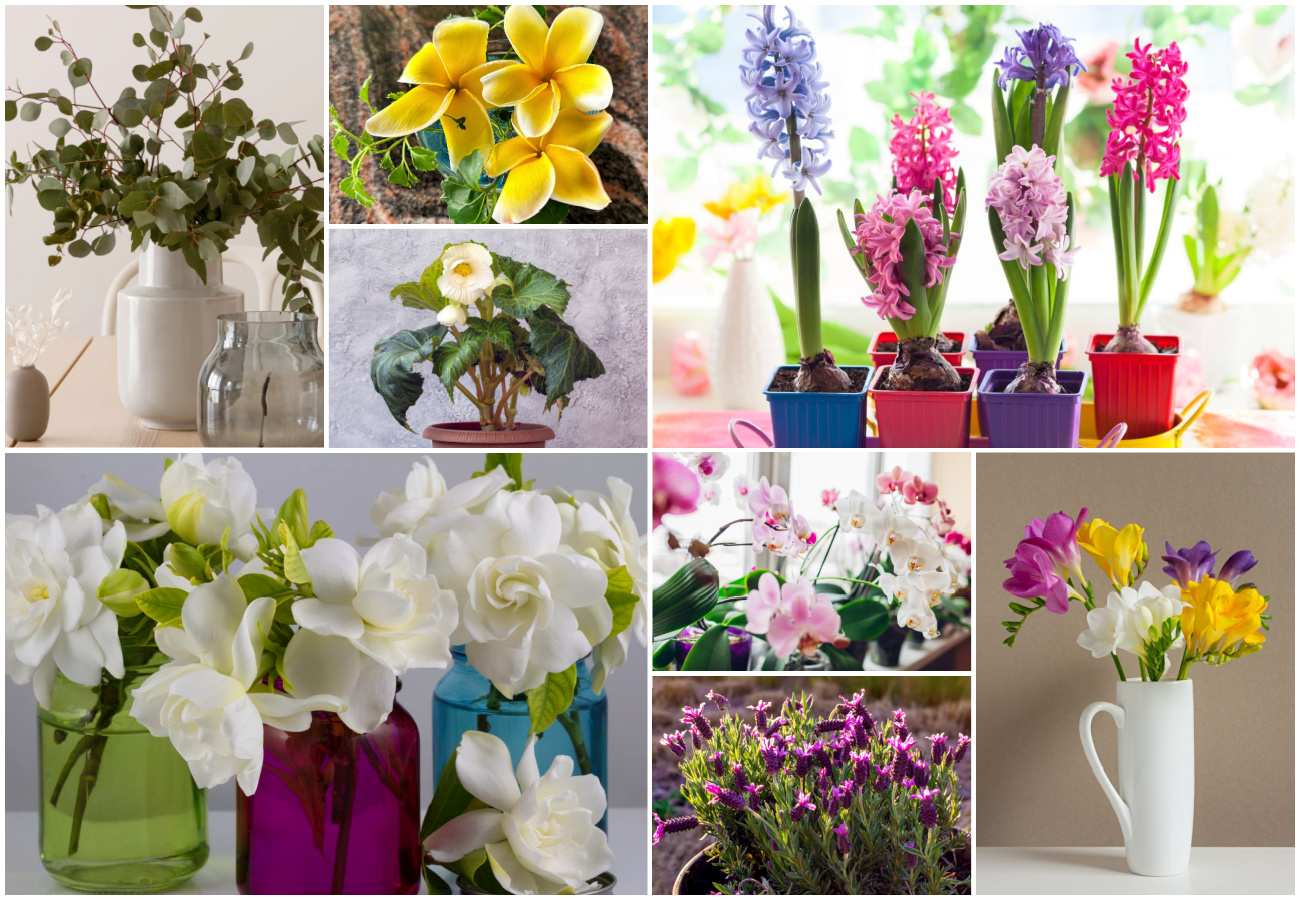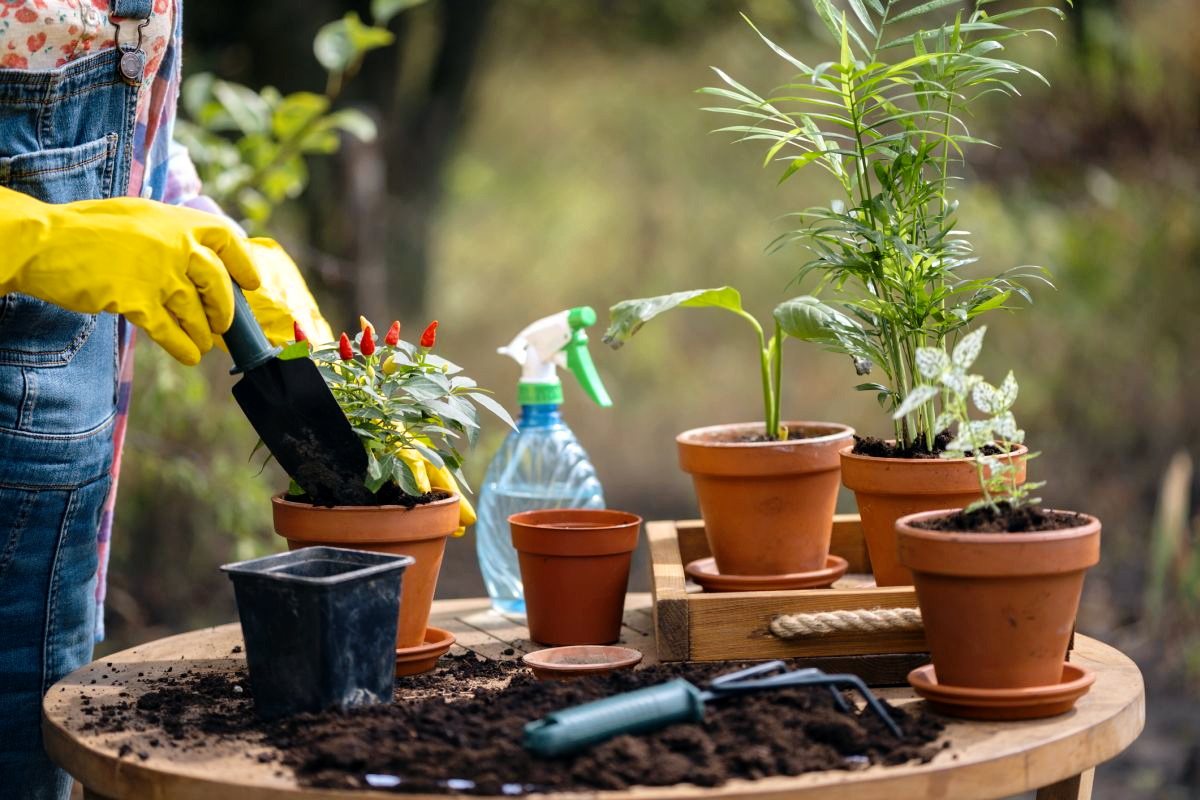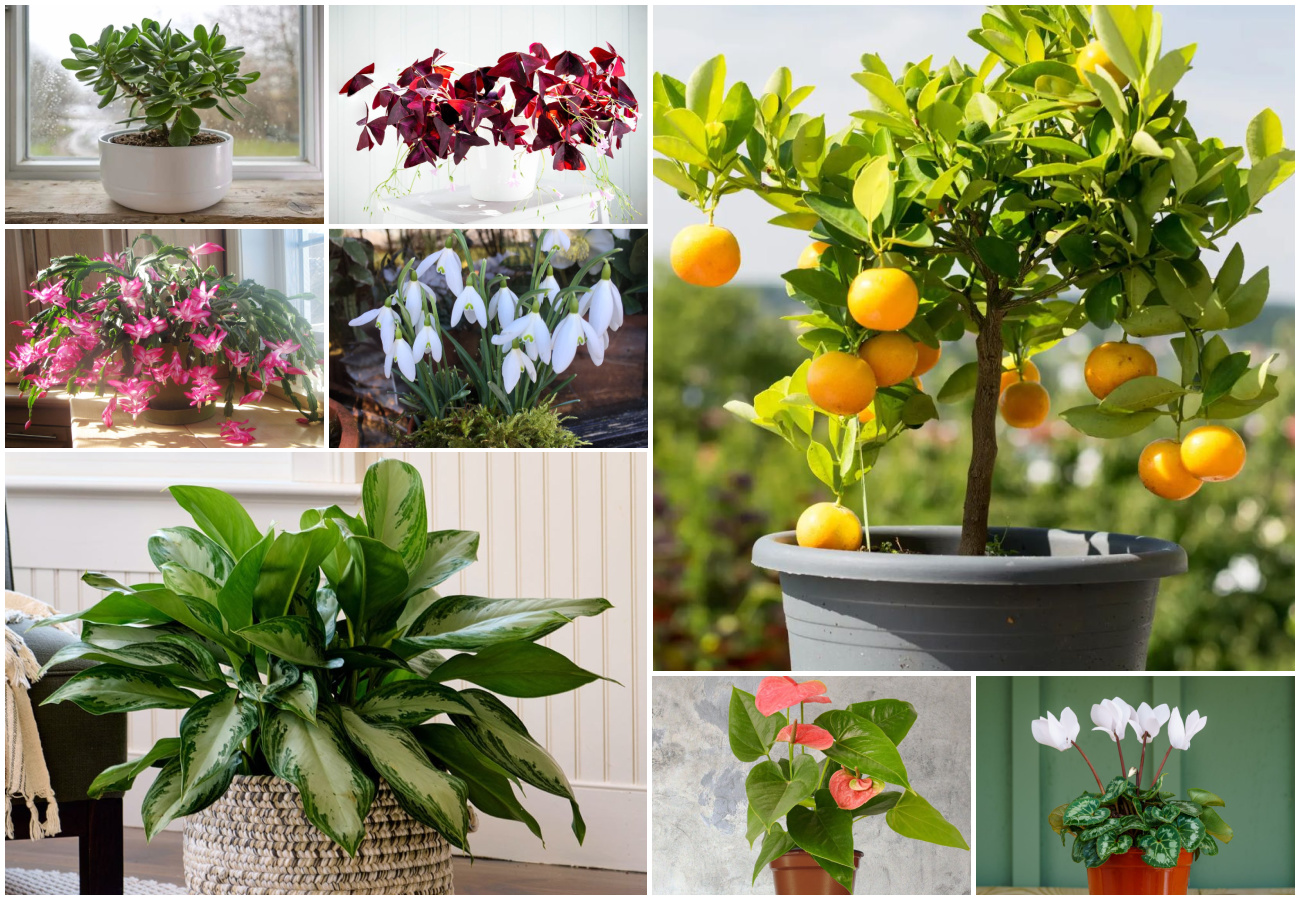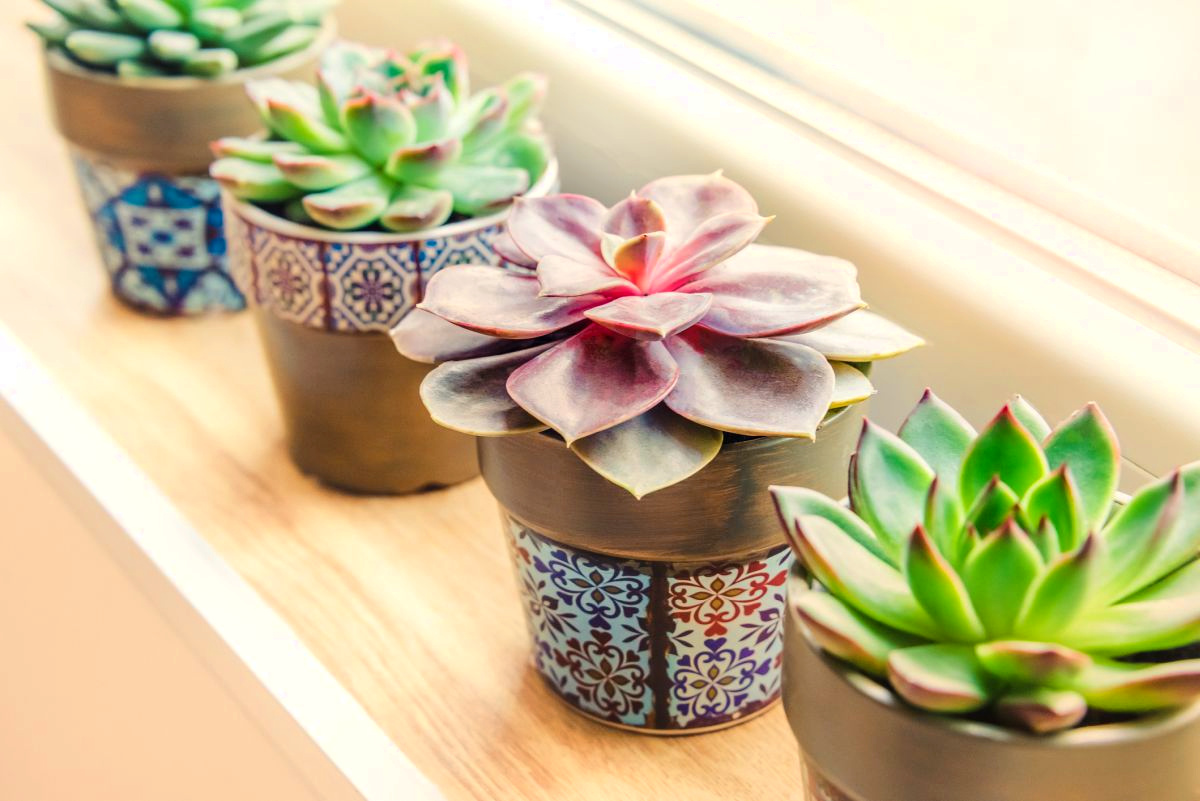Alocasia amazonica is most likely a hybrid of Alocasia sanderiana and Alocasia watsoniana, although many other species are mentioned as possibly involved. In turn, Alocasia ‘Polly’ is actually short for Alocasia x amazonica ‘Polly’, a specific named cultivar of this hybrid.
The two plants are largely the same, except for their size: the ‘Polly’ variety stays a bit smaller than is the norm for the hybrid on the whole.
Though not very easy plants, they are definitely worth the buy if you can provide what they need. They have lovely foliage that can look especially stunning when the light shines through the smaller leaves.
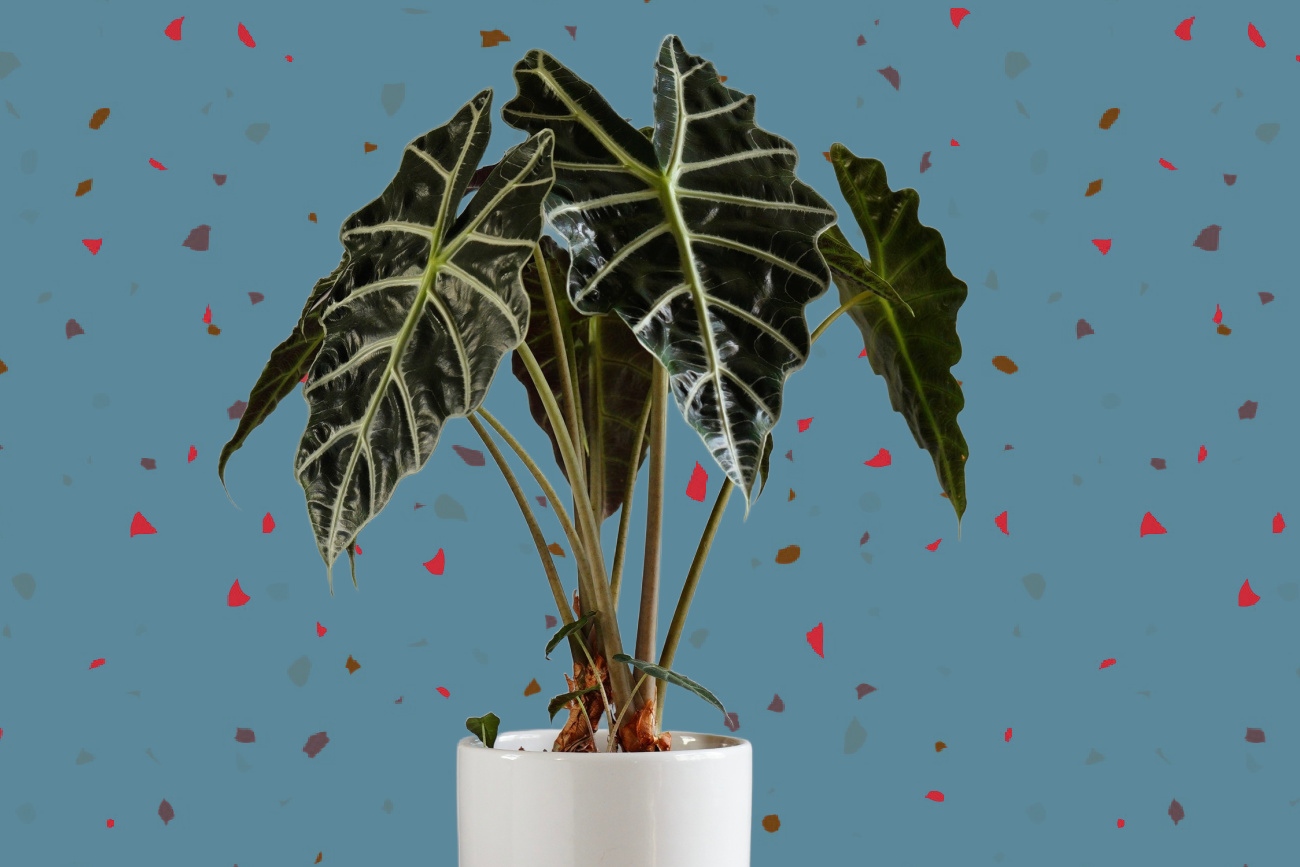
Grow
The name suggests otherwise, neither of these Alocasia varieties naturally originate from the Amazon rainforest. The ‘ancestors’ of this hybrid plant and its cultivars are naturally found in rainforests in Asia.
Knowing about these rainforest origins helps us understand what is required for these plants when it comes to where we should grow them, and the care they require when we grow them as houseplants in our homes.
Because imitating rainforest conditions is so crucial in keeping these Alocasia varieties alive, finding the right location can be a little challenging.
The key grow features to think about are:
- light,
- temperatures,
- humidity
- and the soil/ potting mix in which the plant is grown.
Light
Find a spot with bright but indirect light. In rainforests, the sun is blocked out by higher tree canopies, so this plant will not react well to strong direct light.
The fact that it will burn in direct sun doesn’t mean you shouldn’t place your Alocasia near a window. Just find one that doesn’t receive the sun’s full force, especially not during mid-day.
Be sure to acclimate the plant carefully if you move it to a higher-light location.
A sheer curtain between the window and the plant can help block out the harshest rays if needed.
Temperature
Because they are tropical plants, Alocasia ‘Polly’ and Alocasia amazonica will not appreciate low temperatures at all. In fact, exposing them to cold can cause them to go into hibernation or even die off completely.
Be sure to keep these plants away from drafty spots or any windows that might not be isolated too well (single-pane). Spots below an A/C are not a good idea either, nor is placing the plant close to a heater, as it’ll dry out too quickly.
Humidity
One of the most important factors in keeping your Alocasia ‘Polly’ or Alocasia amazonica happy is humidity. These plants will definitely appreciate being placed in the kitchen or bathroom.
You can also create more humid growing conditions by:
- Growing under a cloche or in a terrarium.
- Misting your plants.
- Placing pebble trays filled with water below the pot.
- Grouping houseplants together.
- Using a humidifier.
Soil/ Potting Mix
These plants should absolutely be kept moist, but as with almost all plant species, it’s not a good idea to keep the soil too wet. Root rot and other problems can quickly become an issue! Aroid plant roots especially need plenty of air pockets and quick drainage.
You can buy an Aroid soil mix for your Alocasia ‘Polly’ or Alocasia amazonica, but it’s also quite easy to put one together yourself. Many houseplants appreciate these airy, potting soil-free mixes. If you have a lot of greenery, DIY-ing it can cut the cost.
For a basic Aroid mix (referred to as 5:1:1), just combine the following:
- 5 parts orchid bark
- 1 part perlite
- 1 part sphagnum moss
Care
Watering
Proper watering is a very important aspect of Alocasia ‘Polly’ and Alocasia amazonica care, so be sure to take some time to figure out a watering schedule that works for this plant.
As the amount of water any plant needs depends on environmental factors such as the amount of light and the air humidity level, no watering schedule will be the same.
Soil should stay moist (but not wet/soaked!) during the Summer months when the plant is in full growing mode. During Wintertime, when growth is slow or even nonexistent, let the soil dry out a little more – though never completely.
Feeding
You can use a diluted, balanced, organic liquid fertilizer to feed your Alocasia ‘Polly’ or Alocasia amazonica around once a month as long as it’s growing. Stop feeding completely during the winter months while the plant is dormant.
Potting and Repotting
Be sure to always use a pot with a drainage hole so any excess water can easily escape. You can repot your Alocasia ‘Polly’ or Alocasia amazonica during Spring if it has outgrown its current container.
Because these plants don’t mind a slightly cramped environment, it’s usually not necessary to repot every year.
Propagation
Alocasia ‘Polly’ and Alocasia amazonica can easily be propagated by dividing the rhizome. Just carefully remove the offsets you would like to plant somewhere else during Spring or Summer (when you are repotting, for example).
Dormancy
These plants will often enter dormancy during the winter months, when temperatures drop and light levels tend to fall. In spring, a dormant plant should spring back into growth when the light, temperature and moisture levels rise once more.
Toxicity
Before you decide to grow Alocasia amazonica or its named cultivars like Alocasia ‘Polly’ inside your home, note that the ASPCA and other sources list plants from the Alocasia genus as toxic to cats, dogs and humans.
Like many other houseplants, species within the Alocasia genus contain insoluble calcium oxalates, which can cause intense burning in the mouth and perhaps even affect the skin.
Always wear gloves when handling these plants and be very careful when growing in a home with children or pets.

